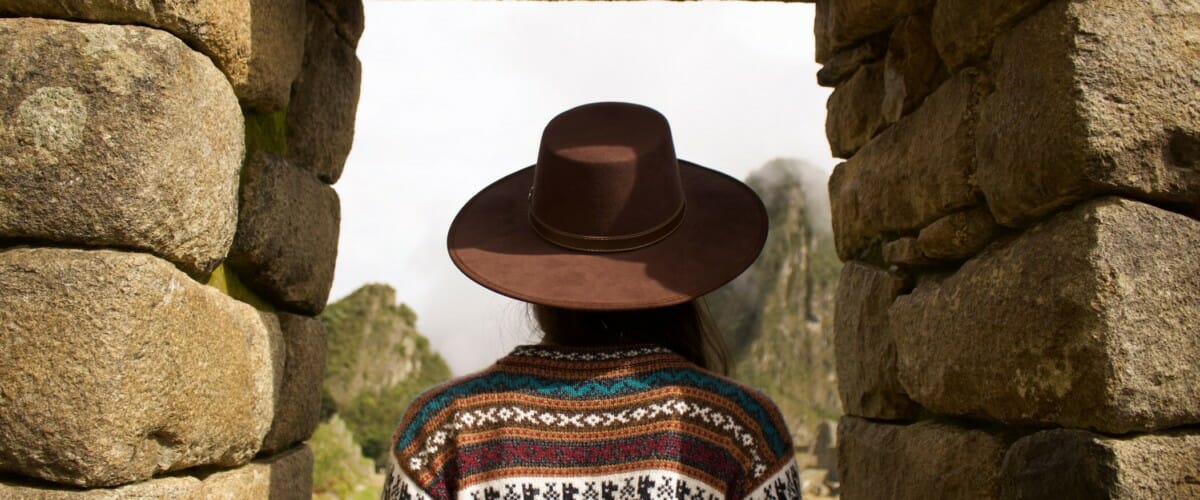As one of the driest places on earth, Arequipa, Peru presents an image of dusty landscapes sprinkled with villages precariously balanced on its hilly terrain. As you drive further down the mountain, however, an oasis of verdure explodes around the sole river and water source that runs through it.
In this lush area, a Christian retreat and farm seeks to minister to the surrounding areas and churches. On any given day, women in the traditional garb of dresses, colorful quilted jackets, and broad-brimmed hats can be seen watching children or even playing a game of soccer. The men can also be found playing soccer on the grassy fields or reclining in the shady, open pavilion. They come for biblical teaching and for rest. The work of Peruvian Christians is fruitful but also exhausting.
We came to this place desiring to come alongside our Christian brothers and sisters to support them in their ministry—a ministry that can actually trace its roots back to two female British missionaries, Miss Ana and Miss Rodas, who came to the Peruvian jungle over sixty years ago. Guido was a young boy living in Tabalosos when these two missionaries showed up and changed his life.
After traveling for six weeks across the Andes mountains, these two missionaries came to the village of Moyobamba to set up a clinic. After years of this kind of ministry, they felt called to spending more time preaching the Gospel, which is what lead them to Guido’s village. Guido was a child in one of the Vacation Bible Schools that they organized providing the first opportunity Guido had to hear the Gospel. Though he was just a child of ten years old, they planted a seed that would later mature into salvation and a passion for ministry.
Guido shared this testimony with us in his living room. Tears rolled down his face as he explained his passion for reaching children. He and his wife, and American missionary, now run a ministry called Hope for Peru. They plant churches, train leaders, and, as a priority, invest in children.
One afternoon we worked with two ladies named Judith and Margot who had been sacrificially serving kids for many years. Both worked full-time jobs and would rush and catch a bus to come teach after-school ministries. That afternoon, we were teaching in a small concrete block room with a tin roof, and a window covered with a tarp. Cutouts of race cars were duck taped on the wall and laminated verses and Christian choruses were attached to a wire along the wall. It was dark and muggy with little airflow, but a much-appreciated shelter from the unforgiving sun. We sang songs in Spanish, played games, and then shared with the help of a translator.
When we were done, we took the two workers aside and my husband spoke words of encouragement. Looking into their eyes, he said firmly, “We see the work you are doing and God sees too. You are not alone.” They smiled, tears in their eyes, and walked away with a lighter step. We had given them nothing really—no money or promises of money. Instead, we gave our time and our words and the reminder that they were seen.
A few thousand years ago, another young woman in a dry, dusty land had an encounter with the God who sees. Hagar had fled the community belonging to Abraham and Sarah. After wandering in the wilderness, she cried out to God and He met her speaking words of comfort and promise. In response, “she called the name of the Lord who spoke to her, “You are a God of seeing,” for she said, “Truly here I have seen him who looks after me.” (Genesis 16:13 ESV). She made this announcement not because her circumstances had changed but because he had shown up in her life.
We’ve partnered with many believers in other countries over the years. We’ve helped build buildings, start churches, evangelize neighborhoods, and done leadership training. However, the most important thing we’ve ever really brought was our sight. We saw them. We valued them. We came alongside, bridging the gap of thousands of miles. We became friends.
This resonates with me as one who does ministry both within my home and outside of it. The idea, the hope, of being seen has been a lifeline pulling me out of despair. As a mother, doing the ministry of serving and loving and giving, I need to know my God and my people see me.
Seeing doesn’t mean fame (which doesn’t satisfy as much as it promises) but seeing means belonging. It means community and support, not necessarily financially but emotionally. We all need this and our Christian brothers and sisters all over the world need it too.
Missions accomplish this beautiful picture of bringing together the body of Christ. This isn’t just our local body of believers but includes our friends in Peru, in Zambia, and in India. Men and women from whom we have much to learn about sacrificial love and passion for the Gospel. We have more to offer them than money—we offer them ourselves. Our friendship, our prayers, and, sometimes, our presence are the gifts we bring.
We have no idea what the long term effects of these actions will be. Those two missionaries from England, unknown as they are to me, had no idea of the ministry that would be founded by one of the young village boys with whom they shared the gospel. They just loved the people enough to go deep into the interior of Peru to give a message of hope and of a God who sees no matter where you are and an invitation to join a community where all can find a place to belong.
This is an updated edition of a post originally published on Tatyanas Table
Featured Image by Jeison Higuita on Unsplash




















Comments are closed.